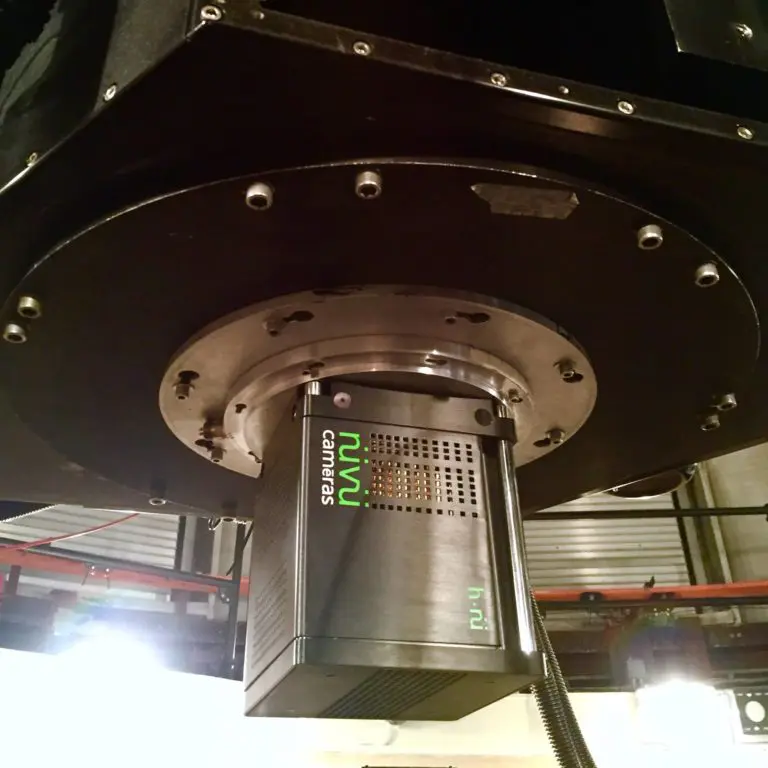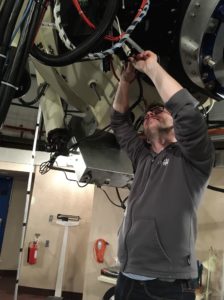PESTO


Technical Specifications |
|
|---|---|
| Instrument Name | Planètes Extra-Solaires en Transit et Occultations |
| Acronym | PESTO |
| First Light | 2014 |
| Wavelength Range | 0.4 - 0.9 (visible to near infrared) |
| Instrument Type | Camera |
| Status | Operational at the Mont-Mégantic Observatory |

François-René Lachapelle helped design the PESTO camera for his doctoral thesis at the Université de Montréal.
The PESTO camera (Planètes Extra-Solaires en Transit et Occultations), has been operational on the OMM telescope since 2017. This camera was developed through a Canada Innovation Fund (CFI) grant led by David Lafrenière in collaboration with Nüvü Camēras.
Operating within the visible-red spectrum, the camera utilises a rapid readout charge-coupled detector (L3 EMCCD). This design grants it an impressive signal sampling rate of approximately 10 to 100 Hz. PESTO boasts zero read noise and zero lost time between successive images. Additionally, it incorporates a GPS system for precise time stamping accurate to the nearest millisecond. These features make it exceptionally well-suited for capturing the timing of exoplanet transits.
The PESTO camera serves as a vital tool for astronomical research. Scientists primarily use PESTO to verify exoplanet candidates that were initially identified by TESS, NASA’s Transiting Exoplanet Survey Satellite. Additionally, they utilise the camera to investigate stars that change in brightness over time (such as variable white dwarfs) and binary star systems undergoing sudden and dramatic brightness changes due to complex processes such as accretion of matter onto compact star.
In essence, the PESTO camera at the OMM telescope is the product of innovative collaboration, allowing scientists to delve into the intricacies of exoplanets and dynamic star systems, and furthering our understanding of these celestial phenomena.
For more information on how to use PESTO as an OMM user, please see our Instruments’ Guide.